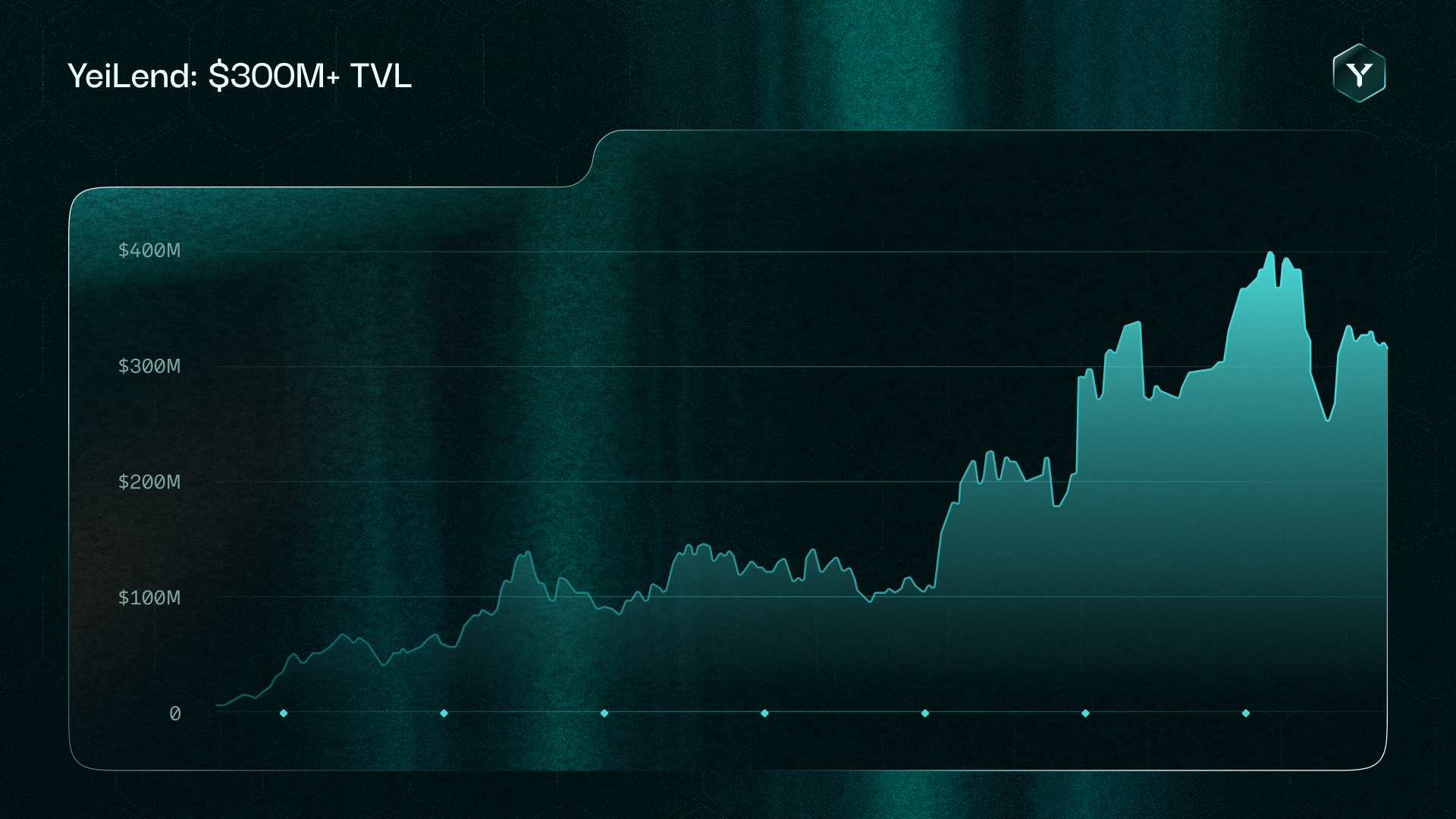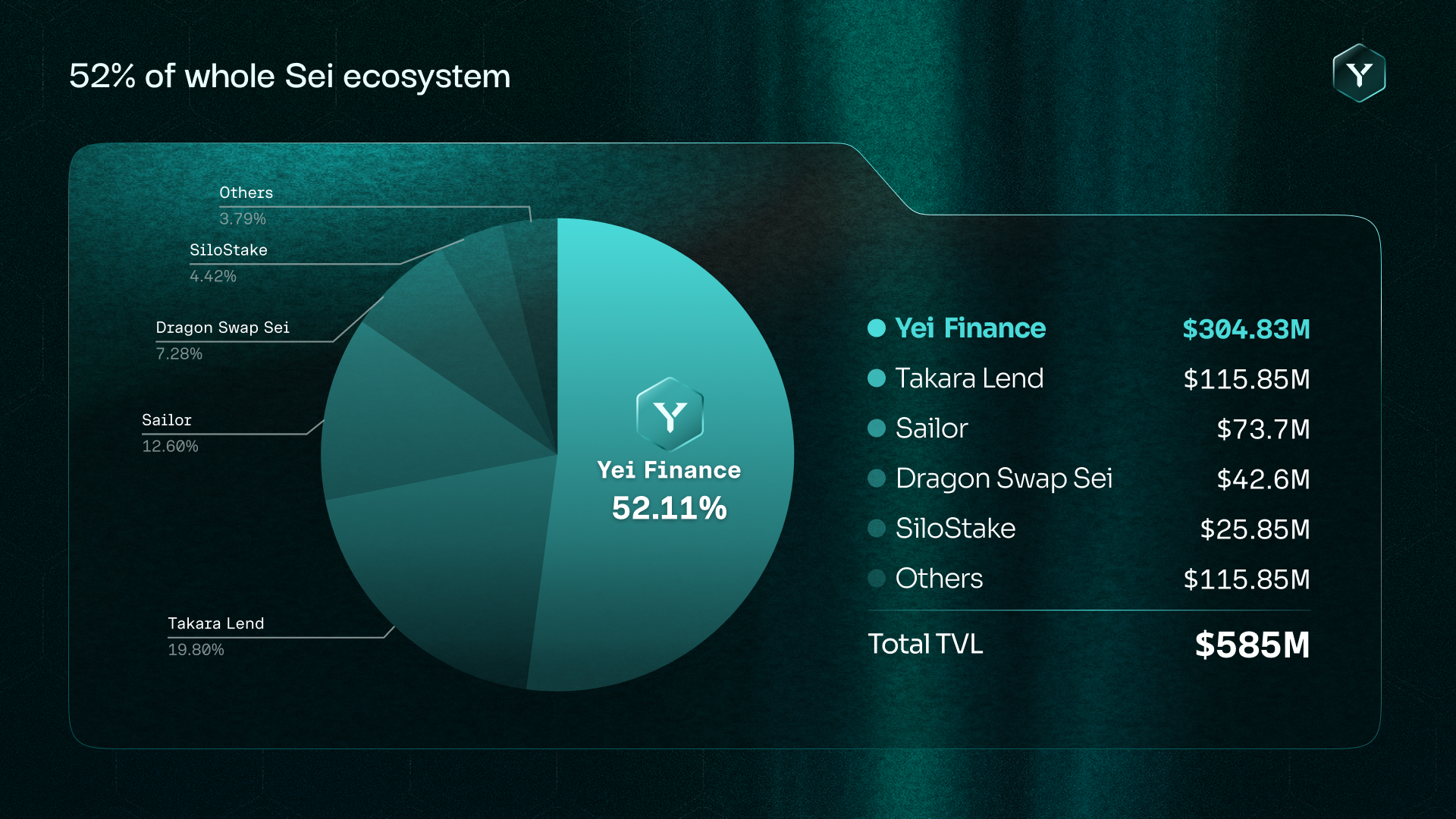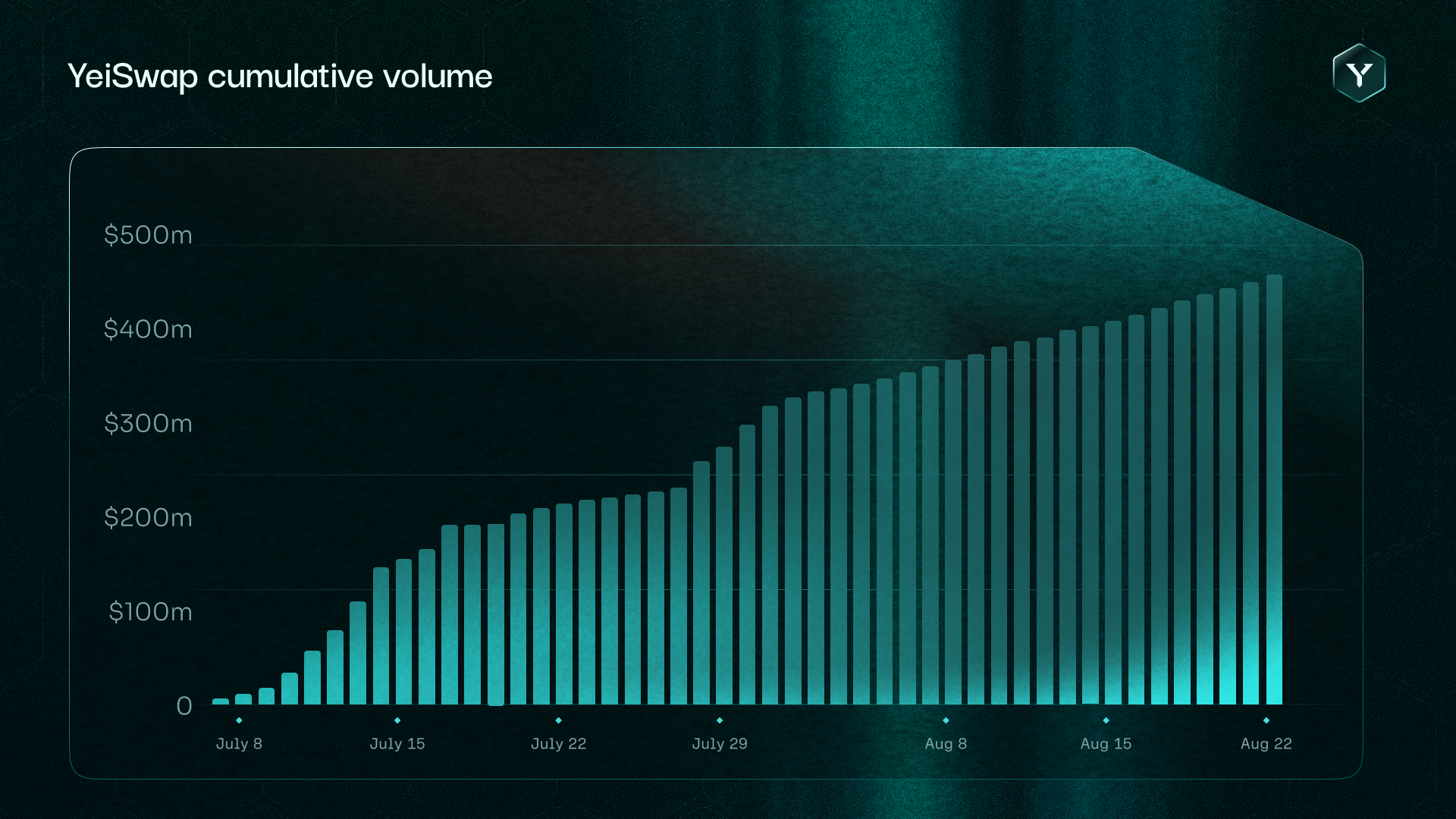Yei Ecosystem Roadmap
As new chains and ecosystems come online, the fragmentation of liquidity increases, and DeFi’s already disjointed user experience degrades further — but now it's time to address it. In this blog, we’ll be walking through what the team has been working on relentlessly and our plans for the next several months.
But first, what has Yei built so far?
Well before Monad, Hyperliquid, and MegaETH started to dominate CT, there was a chain that promised and was delivering on a performant EVM experience — the Sei Network.
The Yei team has always wanted to bridge the gap between the on-chain DeFi experience and retail consumers but, first needed to launch a product, acquire users, and expand from there. Simultaneously, the Sei Foundation was building the perfect sandbox with all the ingredients to make that possible, and so a perfect collaboration began.
Yei Finance launched in June 2024, and quickly accumulated 300M+ in TVL following launch, listing a handful of assets and generating millions in yield for users. However, the team remained focused on building the next generation of DeFi primitives that would compress deltas and return value to users, rather than third-party market makers.

Evolving the offering
As time went on however, it became clear that there was a lot more yield that could be squeezed out of the same TVL by simply arranging the flow of liquidity in a way that was not only safe, but resulted in dramatically higher capital efficiency.
We believe the future of DeFi will be chain-abstracted, modular, and composable. Instead of siloed liquidity pools and fragmented markets, we’re building primitives that can scale across ecosystems.
This vision starts with two core components:
- YeiLend: A pool-based money market that has become the base layer of yield in the Sei ecosystem, powering strategies, vaults, and dApps.

- YeiSwap: A concentrated liquidity DEX that layers on top of YeiLend’s interest-bearing tokens, allowing LPs to earn stacked yield from both trading fees and lending interest.

We’ve already proven that liquidity can be shared natively between lending and swapping. The next step is to extend this design across chains—coordinated not by siloed deployments, but through a unified execution layer.
Why Sei?
Sei has consistently proven itself as the execution layer built for scale.
From the launch of Sei v2 in July 2024 to the unveiling of Sei Giga in May 2025, the team has delivered a clear trajectory of performance breakthroughs, making Sei the natural foundation for Clovis.
-
Sei v2: First Parallelized EVM Sei v2 went live in mid-2024 as the industry’s first parallelized EVM, combining parallel execution with fast consensus and optimized storage. Within months it surpassed $250M in TVL, 400k daily active addresses, 150+ projects, and over 6.5M users — setting a new benchmark for EVM performance. •
-
The Giga Roadmap: Scaling Beyond Web3 Limits Sei Labs then published the Giga roadmap (Dec 2024), outlining how the EVM could achieve web2-scale throughput by targeting 5 gigagas per second — a ~50x leap over mainnet EVM chains.
The initiative was organized into three workstreams:-
Execution: A new EVM client rebuilt from scratch, ahead-of-time compilation, intelligent parallelization, and a new binary encoding format. ◦
-
Consensus: Multi-proposer consensus, asynchronous execution (decoupling ordering from state root generation), and a new data propagation layer. ◦
-
Storage: Asynchronous state commitments, asynchronous disk writes, and optimized read-heavy databases.
-
-
Sei Giga: First Multi-Proposer EVM L1 In May 2025, Sei Labs published the Sei Giga whitepaper, delivering on the roadmap with the first multi-proposer EVM chain: ◦
-
5 gigagas throughput (~200k TPS). ◦
-
Sub-400ms finality, rivaling web2 latency. ◦
-
Autobahn consensus with parallel block proposals, removing the single-proposer bottleneck. ◦
-
Async state commitments and an entirely new execution client (not based on geth or reth), achieving 50x throughput, 70x faster block production, and 40x more efficient execution.
-
For Clovis, Sei provides the only EVM environment that combines Ethereum compatibility with true web2-grade performance. This allows us to scale cross-chain lending, DEX, and bridging primitives without being constrained by throughput bottlenecks.
Network Reach and Distribution
Sei’s network effects matter just as much as its tech. Today, Sei provides:
-
671,000+ daily active addresses (July 2025)
-
$626M+ TVL
-
Wallet support: MetaMask, Rabby, Backpack, Sei Global Wallet
-
Exchange access:
This reach ensures our products don’t just function—they scale with real users and capital.
Looking Ahead
Next, we’ll be launching the first cross-chain liquidity coordination layer on Sei, designed to unify fragmented liquidity and scale yield across ecosystems. This isn’t another isolated deployment — it’s an execution layer that allows lending, swapping, and bridging to work together seamlessly, no matter which chain users start from.
With this layer, liquidity will no longer live in silos. Positions will move fluidly across networks, yield will be maximized through stacked primitives, and users will finally experience DeFi the way it was meant to be: composable, cross-chain, and capital-efficient.
We believe this will mark a new era where liquidity is coordinated programmatically rather than fragmented across chains, giving both builders and users a foundation that scales without compromise. And this is just the beginning of what Clovis will unlock.